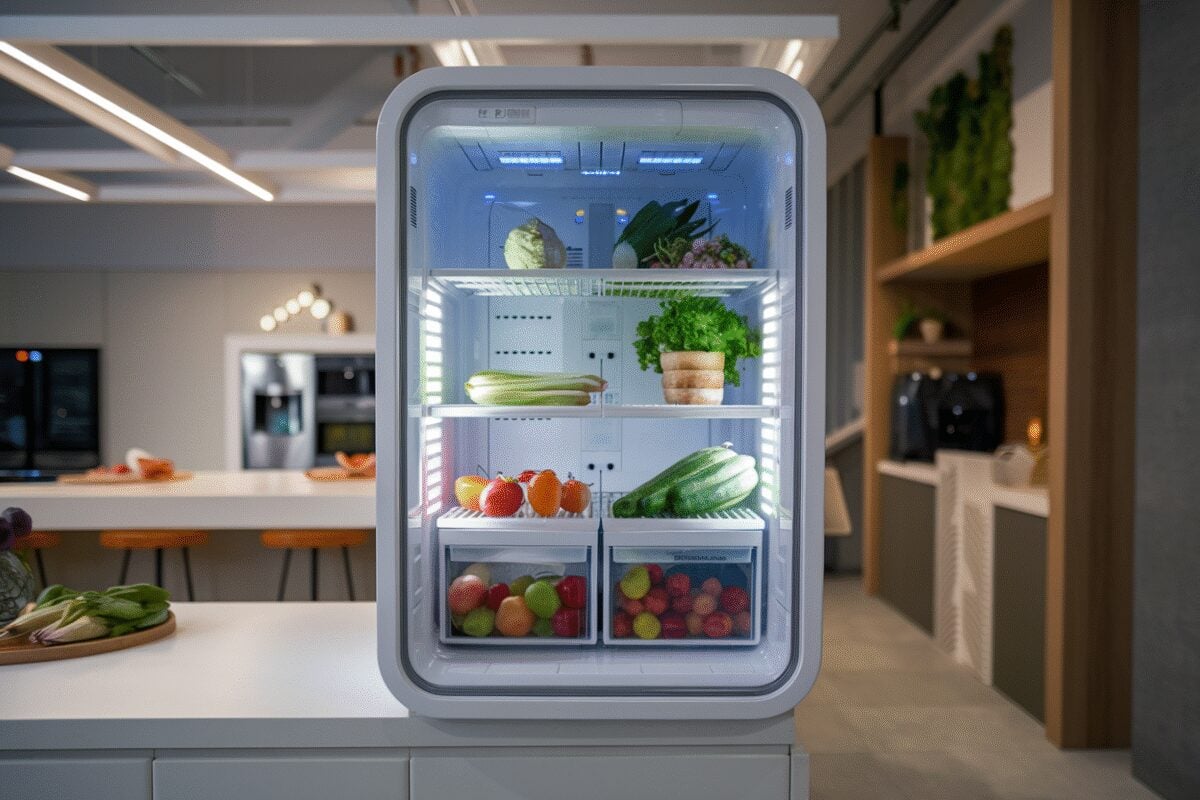Revolutionizing refrigeration, scientists have unveiled a groundbreaking technique that promises to make cooling systems safer and more environmentally friendly. The innovative ionocaloric cooling method could redefine how we manage temperature.
The world of refrigeration is on the brink of transformation as traditional methods face increasing scrutiny for their environmental impact. Typical refrigeration systems rely on fluids that absorb heat and evaporate, but many of the refrigerants used are potent greenhouse gases. In a landscape where climate change is a pressing concern, the search for sustainable alternatives has never been more critical. The introduction of ionocaloric cooling could signal a new era in temperature management, but what does this mean for consumers and industries alike?
Scientists from the Lawrence Berkeley National Laboratory and the University of California, Berkeley have developed a method that not only cools but also addresses the pressing need for eco-friendly solutions. This innovation raises important questions about our reliance on traditional refrigerants and the potential for a major shift in technology. As researchers explore this new frontier, will we finally find an efficient cooling solution that aligns with global sustainability goals?
The Science Behind Ionocaloric Cooling
At its core, ionocaloric cooling leverages phase changes in materials to generate cooling effects. When a substance transitions from solid to liquid, it absorbs heat from its surroundings—a principle that is well understood yet underutilized in refrigeration technology. This process can be enhanced by introducing ions into the mix, which effectively lowers the melting point of certain materials without additional heat input. For instance, adding salt to ice causes it to melt at lower temperatures, thus creating a cooling effect.
The researchers modeled the ionocaloric cycle theoretically and demonstrated its potential efficiency compared to conventional refrigerants. Their findings suggest that by passing an electric current through a fluid containing ions, they could shift its melting point and consequently alter temperatures efficiently. In experimental setups using iodine and sodium-based salts with ethylene carbonate—an organic solvent commonly utilized in lithium-ion batteries—significant temperature drops were achieved with minimal energy input.
This innovative approach not only has implications for efficiency but also offers an opportunity to utilize materials that have minimal impact on global warming potential (GWP). By potentially achieving GWP negative outcomes through this method, researchers aim to address both energy efficiency and environmental concerns simultaneously.
Environmental Implications of Ionocaloric Cooling
Current refrigeration technologies rely heavily on hydrofluorocarbons (HFCs), which are known for their high GWP and detrimental effects on climate change. The Kigali Amendment has prompted countries worldwide to commit to significantly reducing HFC usage over the next 25 years. As these regulations become more stringent, innovations like ionocaloric cooling could provide viable alternatives that comply with international agreements.
The potential of this new method lies not just in replacing existing technologies but also in enhancing operational efficiency while reducing carbon footprints. Researchers are exploring various salt combinations and their efficiencies in heat extraction processes, indicating that ionocaloric systems could be tailored for specific applications across different industries.
As these developments unfold, it’s crucial to consider how businesses can integrate this technology into existing infrastructures. The path ahead must navigate regulatory landscapes while ensuring that commercial implementations maintain cost-effectiveness without compromising performance or safety standards.
Challenges Ahead: From Lab to Market
While the theoretical models and initial experiments demonstrate promising results, significant challenges remain before ionocaloric cooling can be widely adopted commercially. Researchers must transition from lab-scale experiments to full-scale applications capable of meeting consumer demands across various sectors.
One major challenge is scalability; developing systems that function efficiently at larger scales requires extensive testing of different material combinations and operational conditions. Additionally, researchers are investigating ways to optimize energy consumption within these systems while maintaining competitive costs compared to traditional refrigeration technologies.
As mechanical engineers like Ravi Prasher emphasize, balancing GWP, energy efficiency, and equipment costs is essential for successful commercialization. The results from ongoing studies will guide future efforts in refining this technology into practical applications suitable for everyday use.
A Future Powered by Sustainable Refrigeration
The future of refrigeration seems poised for change as innovations like ionocaloric cooling emerge as viable options within an increasingly eco-conscious market landscape. Continued research will be critical in overcoming existing barriers while enhancing system performance through experimentation with diverse materials and techniques.
The implications extend beyond just consumer appliances; industries dependent on effective temperature control stand to gain significantly from adopting sustainable practices facilitated by such technologies. If successful implementation occurs at scale, we could witness a substantial reduction in greenhouse gas emissions attributed to refrigeration systems globally.
As we move forward into this exciting chapter of technological advancement, collaboration among researchers, industry stakeholders, and policymakers will be pivotal in shaping an environmentally friendly future for thermal management solutions worldwide.


